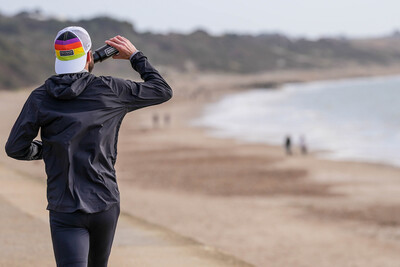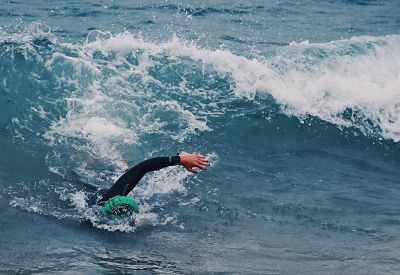Remember the scene from the movie Rocky IV where he’s out in the remote wilds of Russia lifting tree trunks in backside-deep snow and using horse-carts as a squat rack as training for his boxing match with Ivan Drago? Well, that’s cross-training.
Cross-training was defined by Tanaka way back in 1994 as a means ‘to improve competitive performance in a specific sport by training in a variety of other sports’. As a concept though, this really isn’t anything new – athletes have been cross-training since men slapped olive oil on and ran naked round the Athens Coliseum in Ancient Greece.
On that note, there’s an old fable about a famous wrestler in ancient Greece named Milo who gained his immense strength for his sport by lifting a new-born calf one day when he was a boy, and then lifting it every day as they both grew. In a few years, he was able to lift the fully grown cow. I still wonder how he bribed the cow to be so complicit for years on end, but then that’s the kind of weird stuff you think about as an academic when you’re three hours into a turbo session and you’re lost in a cartoon world of on-screen power-ups and perfectly rendered hair.
The key consideration though is asking yourself, why is it worth thinking about cross-training? There are two main trains of thought when it comes to its value...
The first is using cross-training can be a means to improve your physical performance in your chosen sport. Secondly, cross-training can be a way to look after your own mental wellbeing and longevity in competition. Both have their own merits.
Does cross-training improve your performance?
So, is it possible to train in a different activity in such a way that improves your performance in your chosen sport? The answer, as always, is ‘it depends’.
To know if cross-training outside of your sport is of value, the context is key and it’s important to have a good understanding of what the key performance indicators are for a particular sport. The published evidence endorsing it as a practise isn’t as widespread as you might think because it’s difficult to design studies to investigate its effects robustly and free from bias.
Nonetheless, its potency has been supported in the recent literature in sports as diverse as rugby, basketball, running and dancing to help specifically develop heightened and specialised skills in agility, speed and team dynamics that their primary sport alone couldn’t provide.

However, why would you expect to be better in one sport by then doing something completely different?
Indeed, in an older study back in 1995 that investigated cross-training for distance running, the conclusion was that runners could benefit from cross-training… but that their time would have been better spent if they’d just gone out and run some more. Well, that’s fine if your sport is low impact, but some sports are riskier than others when it comes to increasing their volume. Studies did show still that the aerobic conditioning you perform in one activity (cycling) can still transfer across to another (running).
Alternatively, 50m sprint swim specialist Mark Foster was renowned for doing a lot of weight training to improve his swimming, former pro cyclist Scott Mercier went snow shoeing to keep his off-season condition up, and golfer Phil Mickelson did martial arts as a means to improve his core strength, flexibility and balance with his swing.
However, a perfectly valid criticism of using such anecdotes is that their success could be in spite of what they were doing, not because of it. That’s always possible. That said, I did enjoy reading a review paper of cross-training practise in rugby which recommended players undertake activities such as judo, basketball or even special forces training. Such holistic training creates the stuff of nightmares when you square off against them in your next scrum.
The mental benefits of cross-training
Now, let’s take a look at that second main reason for doing it – mental freshness and wellbeing. If you assume a typical seasonal cycle for an athlete is a year in length (although bear in mind an Olympian may alternatively work off an even longer four-year cycle), that’s a pretty long period of time doing one sport over and over when you consider you may only want to hit a peak once or twice during that period. Mentally, the process can be pretty draining.

With that in mind, I just got back from racing at the Masters World Cyclocross Championships as another of my own cross-training voyages of discovery which produced a display of athleticism and bike handling that could be politely described as, well, ‘questionable’.
However, ditching aerobars and pointy helmets and exchanging them for mud and cowbells was enormous fun. I still felt like I’d been run over by a stampeding horde of dinosaurs two days later. I really could feel the value of being in a bike race that required a little more physicality, pushed my cornering ability to new levels of panic and one where my ego didn’t mind the outcome. Either way, I’ve spent many years splitting my training time up and cross-training.
When I raced bikes in-season, I paddled paddleboards in my off-season. I ended up with a pretty solid core when I got back into aerobars. When I was a surf-lifesaver in-season, I did track and field alongside this and became much more explosive. I’ve probably become a more rounded, well-built and experienced athlete because of this, but more crucially when the big goal of the year arrived, I wasn’t mentally fried.
Sooner or later, with age, we all become a product and result of our chosen lifestyles. That may manifest itself as years of poor diet seeing weight gain that you can’t out-train anymore, injuries and breakages caused by years of overuse, or mental fatigue because we just can’t motivate ourselves for ‘one more year’.
By drilling into your chosen sport and experimenting with new things, you may find new ways to improve both physically and psychologically. Anyway, Rocky won, Drago lost, so I’m off to find a slaughterhouse to do some punchbag work in…
